Messerschmitt Bf 109 History
The Messerschmitt Bf 109 (also erroneously referred to as the Messerschmitt Me 109) was one of the world’s great fighter planes and it enjoyed the distinction of having built in greater numbers than any other – some 33,000 were built. It was mass-produced in Germany from 1936 through 1945 and it was built in other countries after the war, serving in Spain until 1967.
The Bayerische Flugzeugwerke BF 109 made its maiden flight from Augsburg-Haunstetten in September 1935 with “Bubi” Knoetsch at the controls. Although the aircraft had been designed around the 610 hp Jumo 210 twelve-cylinder inverted-Vee liquid cooled engine, one was not available at that time and, ironically in view of later events, the prototype took off powered by a 695 hp Rolls-Royce Kestrel imported from Britain.
In January 1936 the second machine was flown with the Jumo engine, and by then ten aircraft had been ordered by the Reichsluftfahrtministerium (RLM) for evaluation. The proposed two-gun Bf 109A did not go into production, the first series model being the Messerschmitt Bf B-1 (635 hp Jumo 210D) armed either with three MG 17 guns or two MG 17s and an MG FF, the later firing through the propeller shaft. A team of Bf 109s scored several successes at Zürich in 1937, and on 11 November that year the Bf 109V13, with a specially boosted DB 601 engine, established a world landplane speed record of 379.38 mph (610.55 km/hr). Twenty-four BF 109B-2s were dispatched in 1937 to join the Lufwaffe’s Condor Legion in Spain, followed soon after by others of the same model.
The C-1, which joined them in 1938, had the number of guns increased to five. Some B-2 aircraft were converted to Bf 109D-0s by the installation of DB 600A engines, and a small number of the similarly powered D-1 were exported to Hungary and Switzerland. By this time five other German manufacturers had joined the production programme, and two hundred and thirty-five Bf 109D “Dora” series fighters were in Luftwaffe service at the outbreak of World War Two.
The Bf 109Ds were already being replaced in increasing numbers, however, by the Bf 109E series which first appeared in 1938. This series proved to be superior in performance and maneuverability to virtually every fighter opposed to it during the advances through Poland, Czechoslovakia, France, Belgium and Holland, and Bf 109E mounted so rapidly that Germany could afford to export substantial numbers of the Bf 109E-3 in 1939-40 to Bulgaria (nineteen), Hungary (forty), Japan (two), Romania (sixty-nine), Slovakia (sixteen), Switzerland (eighty), the USSR (five) and Yugoslavia (seventy-three). Despite these claims on the numbers built, the E “Emil” variant remained the principal Luftwaffe version in service throughout the Battle of Britain. The E series extended to the E-9, and included models built as fighters, fighter-bombers and reconnaissance aircraft. In July 1940 Fieseler began converting ten E-3s to BF 109T (Träger = carrier) configuration for operation from the proposed aircraft carrier Graf Zeppelin, but this project proved abortive and they were restored to their original configuration late in 1941.
The finest model of the Bf 109 was the Bf 109F “Friedrich”, the first version capable of out-manoeuvring the Spitfire V and a much cleaner design aerodynamically. The F series were powered by either 1,200 hp DB 601N or 1,300 hp DB 601E engines, with neater nose contours, the tail assembly redesign included a cantilever tailplane and retractable tailwheel, and the increased-span wings had rounded-off tips.
By the late summer of 1942, however, the F series had been supplanated in production and service by the Bf 109G, familiarly known as the ‘Gustav’. This model was the last major production model, and was intended to be an improved version of the Bf 109F. In fact, the heavier DB 605 engine and extra equipment installed brought an inevitable drop in performance; but despite this, the production rate actually increased, and the Bf 109G was widely employed in Europe, North Africa and on the Russo-German front. More than fourteen thousand Bf 109s – nearly half of the total German production of the type – were built in 1944 alone, and G models were exported to Bulgaria (one hundred and froty-five), Japan (two), Romania (seventy), Slovakia (fifteen), Spain (twenty-five) and Switzerland (twelve).
The Bf 109H was an extended-span high-altitude version built only in small numbers, and the Bf 109K (a refined version of the G) likewise saw only limited service. Projected versions included the Bf 109L and S, neither of which reached the production status.
| Messerschmitt Bf 109G Specifications |
|---|
| Aircraft Type: |
| fighter |
| Dimensions: |
| wingspan: 32 ft, 6 in |
| length: 29 ft |
| height: 8 ft, 2 in |
| Weights: |
| empty: 5,893 lb |
| gross: 7,491 lb |
| Power plant: |
| 1 × 1,475 hp Daimler-Benz DB 605 liquid-cooled in-line engine |
| Performance: |
| maximum speed: 386 mph |
| ceiling: 37,890 ft |
| maximum range: 350 mi |
| Armament: |
| 2 × 13 mm calibre machine guns |
| 1 × 20 mm calibre cannon |
| Operational Use: |
| 1937–1945 |
Operational History
The Spanish Civil War
In the summer of 1936 the Luftwaffe had dispatched a multi-role combat force, the Condor Legion, to assist the Nationalist forces fighting in the Spanish Civil War. In a counter-move the Soviet Union began supplying modern aircraft to the Republican Air Force.
The Bf 109 received its baptism of fire in July 1937, when Republican forces went onto the offensive west of Madrid. During the air actions that followed, the primary mission mission of the Bf 109s was to escort Junkers Ju 52 bombers which were attacking targets in the battle area.
HobbyKing RC Messerschmitt Bf109
Messerschmitt Bf109 kit for Sale
Buy 1:48 Airfix Bf109 model kit
Order RC Messerschmitt Bf109
messerschmitt me 109 balsa kit
Tamiya 1/48 Messerschmitt Bf 109
Some of the fiercest aerial fighting of the war in Spain took place during the Republican offensive in the Teruel area early in 1938. On 7 February Hauptmann Gotthardt Handrick, now the commander of Jagdgruppe 88, was leading the Bf 109s from both Staffeln on a bomber escort mission. Near Teruel he sighted a format a formation of 22 Soviet built Tupolev SB-2 bombers, and a careful search of the sky revealed no sign of Republican fighters in the area. Handrick led his fighters in an attack on the enemy aircraft and several bombers were shot down before a score of Polikarpov I-16 fighters arrived on the scene and a swirling dogfight followed. When the action ended the Messerschmitt fighters had destroyed ten enemy bombers and two fighters for no loss to themselves.
The Polish Campaign
Contrary to the popular legend, only a small proportion of the Bf 109 force took part in the Polish campaign – five Gruppen, with less than 200 serviceable aircraft, out of 24 Gruppen then equipped with the type. The bulk of the force was held back in western Germany to meet a possible onslaught by the Royal Air Force (RAF) and the French Air Force – a threat that never materialized.
The 200-odd Bf 109s that did support the attack on Poland proved to be sufficient to counter the weak Polish Air Force. The latter possessed only about 150 fighters and a similar number of bombers, most of the obsolescent types. The best Polish fighter, the PZL 11, had a maximum speed of only 242 mph (389 km/h) at 16,200 ft (4,900 m) and was no match even for the early versions of the Bf 109. Completely outclassed by the “Emil”, these fighters fell as easy prey whenever the two met in combat.
Within a couple of week the Polish Air Force was virtually out of the fight, and before the land campaign ended on 28 September the Luftwaffe felt sufficiently to pull two Messerschmitt Gruppen out and re-position them for the defence of Germany.
The Battle of France
The German attack on the Low Countries and France proved to be virtually a repeat of the previous successful campaign against Poland. Only one French fighter, the Dewoitine D.520, was capable of meeting the Bf 109E on anything like equal terms, but due to mismanagement this aircraft never reached L’Armée de l’Air in any numbers. The RAF had six Hawker Hurricane squadrons in France and these were joined by another four by another four by 12 May, 1940. Although fighting bravely, the British squadrons were unable to combat the well-organized Luftwaffe units successfully, and by 28 May they had all been withdrawn to southern England. On the previous day, over the beaches of Dunkirk, Supermarine Spitfire fighters clashed with Messerschmitt fighters for the first time, showing that at last an aircraft had appeared which was at least the equal of the BF 109.
The Battle of Britain
The action during the period which became known as The Battle of Britain opened in July 1940 with attacks on shipping passing the English Channel. Typical of the scrappy actions of the time was that on the afternoon of 13 July when a convoy freighters passed through the Straits of Dover. Half dozen of Junkers Ju 87 Stuka dive bombers from Sturzkampsgeschwader 1 were in the process of dive-bombing the ships when they came under attack from eleven Hurricane of No 56 Squadron. Major Josef Foezoe was leading the Staffel of Messerschmitt fighters of II/JG 51 escorting the Stukas. No 56 Squadron lost two Hurricanes destroyed and two damaged. On the German side two Ju 87s were seriously damaged but JG 51 suffered no losses.
Six days later, on 19 July, the Bf 109 established its superiority over the RAF’s Boulton Paul Defiant turret fighter. As nine of these fighters belonging to No 141 Squadron were moving in to protect a convoy under attack, they were “bounced” from out of the sun by Bf 109s, again from JG 51. A one-sided action followed and only the timely arrival of a squadron of Hurricanes saved the Defiants from complete annihilation. Only three turret fighters survived the encounter, one with serious damage, while one Bf 109 was shot down. Following this action the Defiant played a minor part in the daylight air battles over the south of England.
During the initial phase of the Battle of Britain, the Bf 109 units flew several “Freijagd” or free hunting sweeps over southern England, aiming to draw RAF fighters into action. Initially, these operations had some success, but when the nature of the German tactics became clear the defending fighter-controllers received orders to engage only against those formations thought to contain bombers. Whenever possible, the fighter sweeps were left well alone.
On 13 August the German attack shifted to airfields in southern England but the early actions brought home to the Luftwaffe the clear lesson that unescorted bombers operating by day over southern England could expect short shrifts if they were caught by British fighters. During the action, the strengths and weaknesses of the Bf 109E, when compared with the RAF’s Spitfire and Hurricane fighters, quickly became evident. Both British fighters could out-turn the Messerschmitt aircraft, and below 15,000 ft (about 4,600 m) the Spitfire was the faster. Above 20,000 ft (6,100 m) the Bf 109E was faster than the Spitfire, and it could outrun the Hurricane at any altitude. A further advantage enjoyed by the Bf 109 pilots was that the fuel injection system of the DB 601 engine allowed them to fly manoeuvres involving negative gravity (G) with no risk of the engine cutting out.
British fighters were fitted with float carburettors, and if their pilots attempted to imitate these manoeuvres the engine would cut out due to fuel starvation. Thus a common method used by Bf 109s to rid themselves of pursuing British fighters was to push hard on the stick to bunt the aircraft, and then dive away. Such marginal differences could decide a few combats, but they should not cloud the overall picture.
Range was also a factor. The BF 109E variant had shortcomings in this area and the long-range Messerschmitt Bf 110 was supposed to fly protective escort for the bombers; in reality the Bf 110 was a failure. The Bf 109, however, soon came into service with the suitably equipped the BF 109E-7 version in August 1940 and this proved a success, although many actually had to protect the Bf 110!
One cliché image of the Battle of Britain is a sky full of Bf fighterss and Spitfires and/or Hurricanes engaged in turning combats with individual enemy fighters. That makes for a spectacular painting with lots of room for artists’ licence, but it is far from the truth. Any pilot who concentrated his attention on one enemy fighter for too long ran serious risk of setting himself up for a surprise attack by another. On both sides, the really successful fighter pilots stalked their prey using the sun and/or cloud to remain unseen for as long as possible, and then announced their presence with an accurate burst that usually ended the encounter. Again, contrary to the cliché image, chivalry had little place in such an action.
Operation Barbarossa
At 03.15 hr on 22 June, 1941, Germany launched Operation Barbarossa, the massive attack against the Soviet Union over a 2,000-mile front by three army groups and four Luftflotten. The Luftwaffe’s fighter force comprised JG 3 under Maj Günther Lützow equipped with the Bf 109F; II. And III./JG 27 under Maj Wolfgang Schnellmann with the E; JG 51 under Mölders with the Bf 109F, II. And III./JG 52 under Maj Hans Trübenbach with the Bf 109E; JG 53 under Maj Günther von Maltzahn with the BF 109F; JG 54 under Maj Hannes Trautloft with the Bf 109F; and JG 77 under Maj Bernhard Woldenga with the E version. In addition, I.(Jagd.)/LG 2 was operational under Hptm Herbert Ihlefeld, this unit being redesignated as the new I./JG 77 on 24 January, 1942.
The opening attacks were directed mainly against Soviet aircraft on the ground, many Messerschmitt aircraft carrying 2 kg (4 ½ lb) SD fragmentation bombs. During the first day of the campaign, the Luftwaffe claimed the destruction of no less than 1,811 Soviet aircraft for the loss of 32 of its own machines. Success followed success, and on 30 June, 1941, JG 51 claimed its total of enemy aircraft to 1,000 on 31 July, followed by JG 54 on 1 August and JG 3 on 15 August.
These were great times for the German fighter pilots and the more talented “Experten” built up huge scores. There were plenty of opportunities for everyone, however, and even the inexperienced pilots could notch up victories.
North African Campaign
During the early autumn fo 1941, I./JG 27 under Hptm Eduard Neumann was transferred to North Africa to supplement the small Luftwaffe force operating in that area under X.Fliegerkorps. This unit was still equipped with the BF 109E-4/Trop and was based at Ain-el-Gazala. By the end of 1941, the other two Gruppen of Jagdgeschwader 27 had been transferred to North Africa, the Geschwader now being equipped with the Bf 109F-4/Trop. On 24 September 1941, Lt Hans Marseille of 3./JG 27 claimed the destruction of five enemy aircraft, and he was shortly to become the most celebrated German pilot of this war theatre.
The early months of 1942 proved most successful for JG 27 in North Africa. Opposed only by obsolescent Hawker Hurricane and Curtiss Tomahawks, the Bf 109F-equipped unit was able to destroy a large number of Allied aircraft.
Post-War Activity
| Messerschmitt Bf 109 variants |
|---|
| Bf 109A |
| Bf 109B “Bertha” |
| Bf 109C |
| Bf 109D “Dora” |
| Bf 109E “Emil” |
| Bf 109F “Friedrich” |
| Bf 109G “Gustav” |
After the war, various design variants of the German fighter were to continue in production in two countries. In Czechoslovakia the production lines set up by Germans were brought back into operation and turned out a much-modified Bf 109G-14 powered by a Jumo 211 engine. Designated the S 199, the fighter entered service with the Czech Air Force in 1948. Twenty-five S199 were purchased by the fledgling state of Israel for its new air force and these saw action during the first Arab-Israeli war.
Meanwhile, the assembly had begun at Hispano Aviation in Spain of a batch of twenty-five Bf 109G-2 airframes bought from Germany during the war. The deteriorating war situation prevented the Germans from supplying the DB 605s, so the aircraft were flown with Hispano Suiza HS 12Z engines and designated as HA-1109s. Hispano set up a production line to build a further 200 of these aircraft from scratch, some of them two-seaters which were designated the HA-1110. In 1953, the decision was taken to modify the aircraft to take the Rolls-Royce Merlin engine, and this gave a significant improvement in performance. As a result, all HA-1109s and HA-1110s in service with the Spanish Air Force were fitted with the Merlin, being redesignated the HA-1112 M1L and the HA-1112-M4L respectively. A few examples would remain in service until 1967, more than 30 years after the Bf 109 prototype had first flown over that country.
Aces

– 352 victories –
image source: www.aviation-history.com

– 301 victories –
image source: en.wikipedia.org

– 275 victories –
image source: en.wikipedia.org
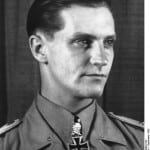
– 158 victories –
image source: en.wikipedia.org

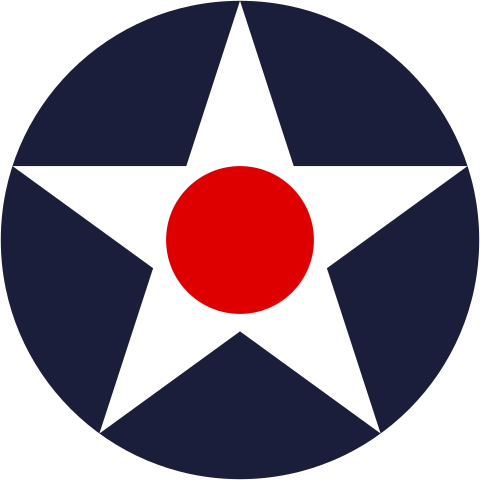
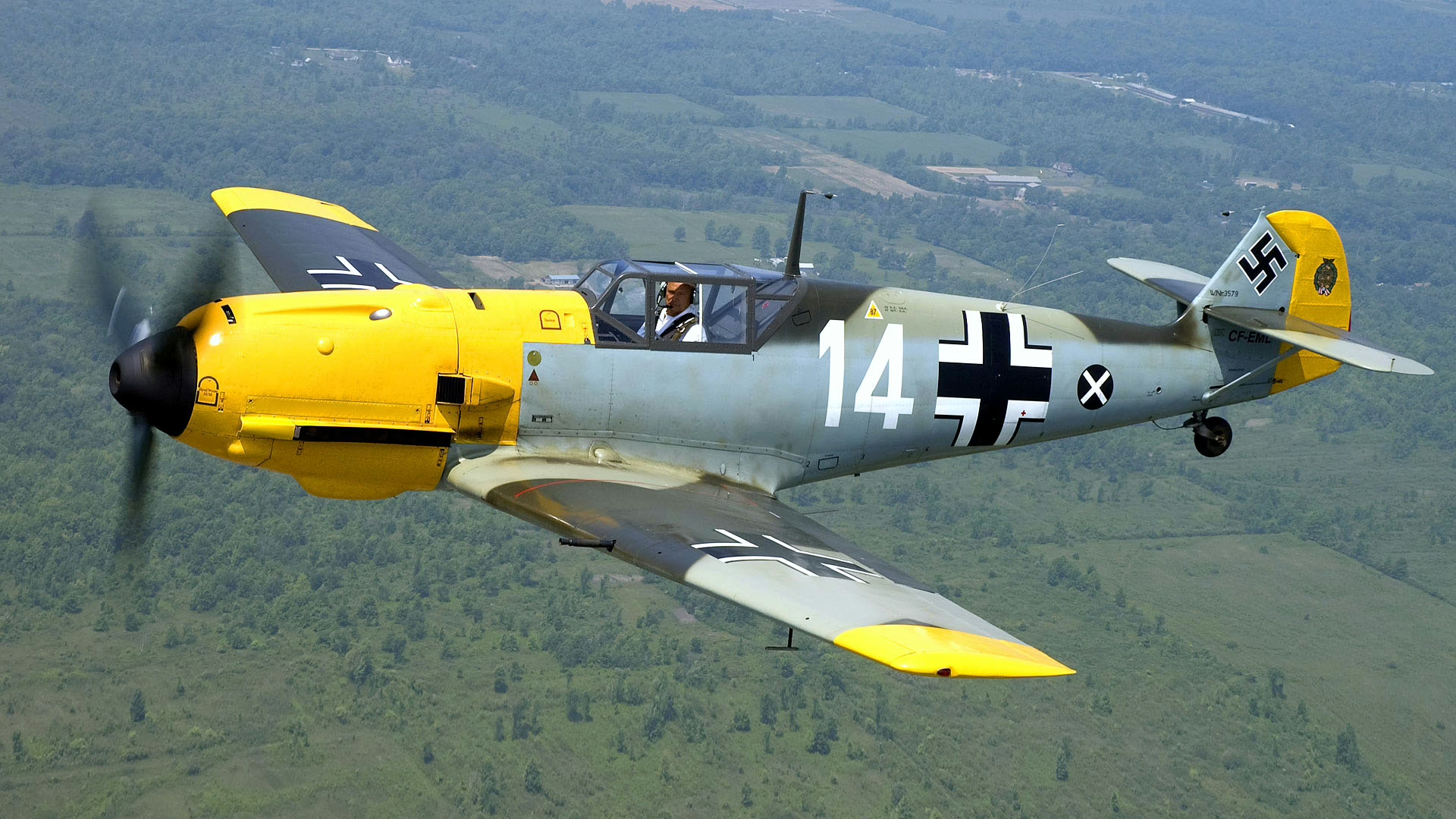
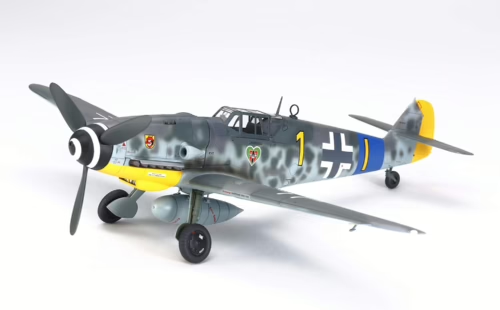
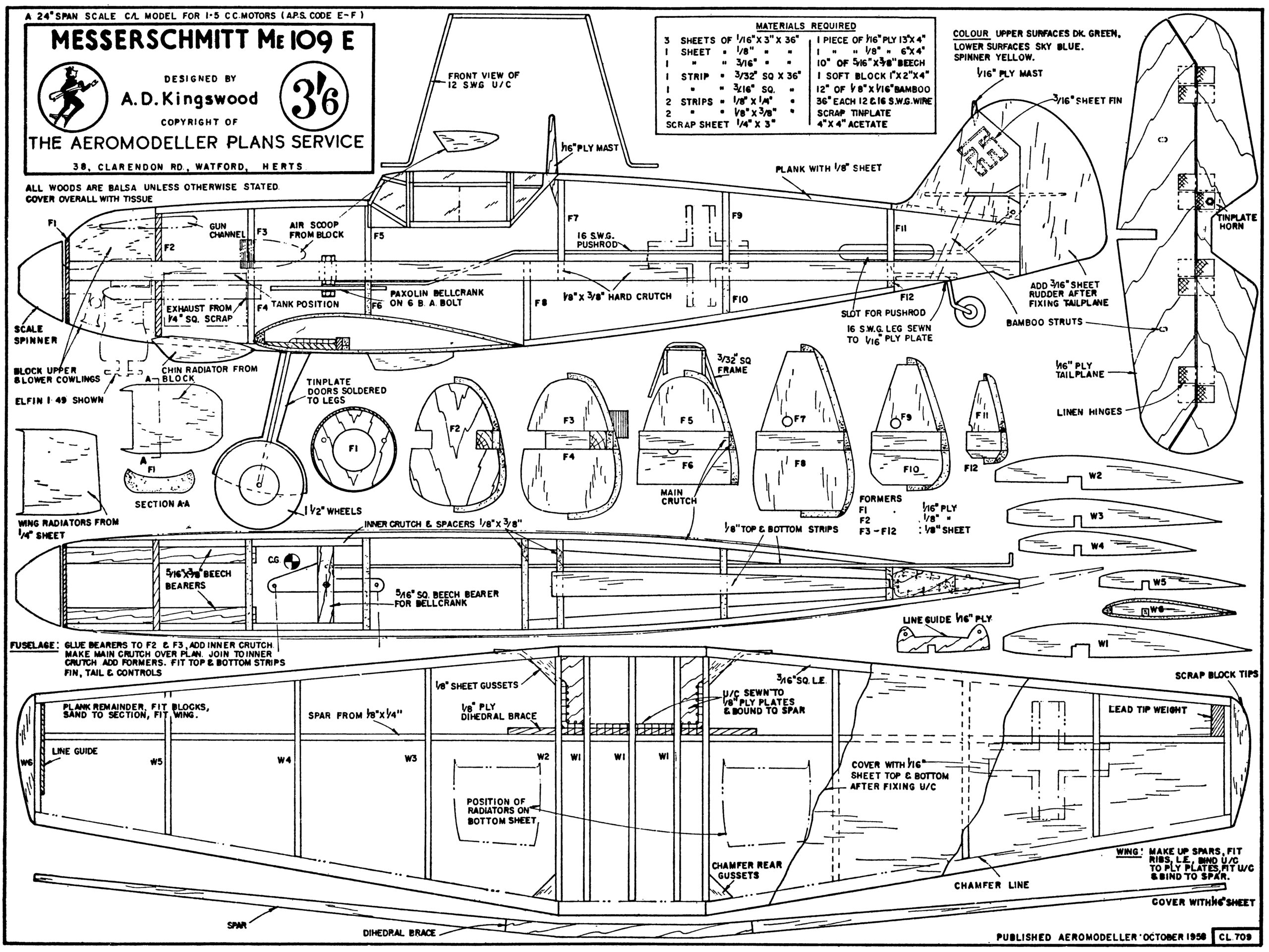





‘…The Bf 109, however, soon came into service with the suitably equipped the BF 109E-7 version in August 1940 and this proved a success, although many actually had to protect the Bf 110!…’ This is a myth. The only Bf 110-equipped unit to received 109 fighter escort was Erprobungsgruppe 210, the fighter-bomber unit. Because it was charged with delivering bombs to a target (via a bomb rack under the central fuselage) it was classed as a ‘bomber’, and was therefore given fighter protection. A lot of times, that fighter-protection came from the Bf 110-equipeed Zerstörergeschwader 26. NO pure Bf 110 fighter unit received Bf 109 escort during the Battle of Britain. Thay is a myth put out decades ago by authors who knew no better in books and magazines.